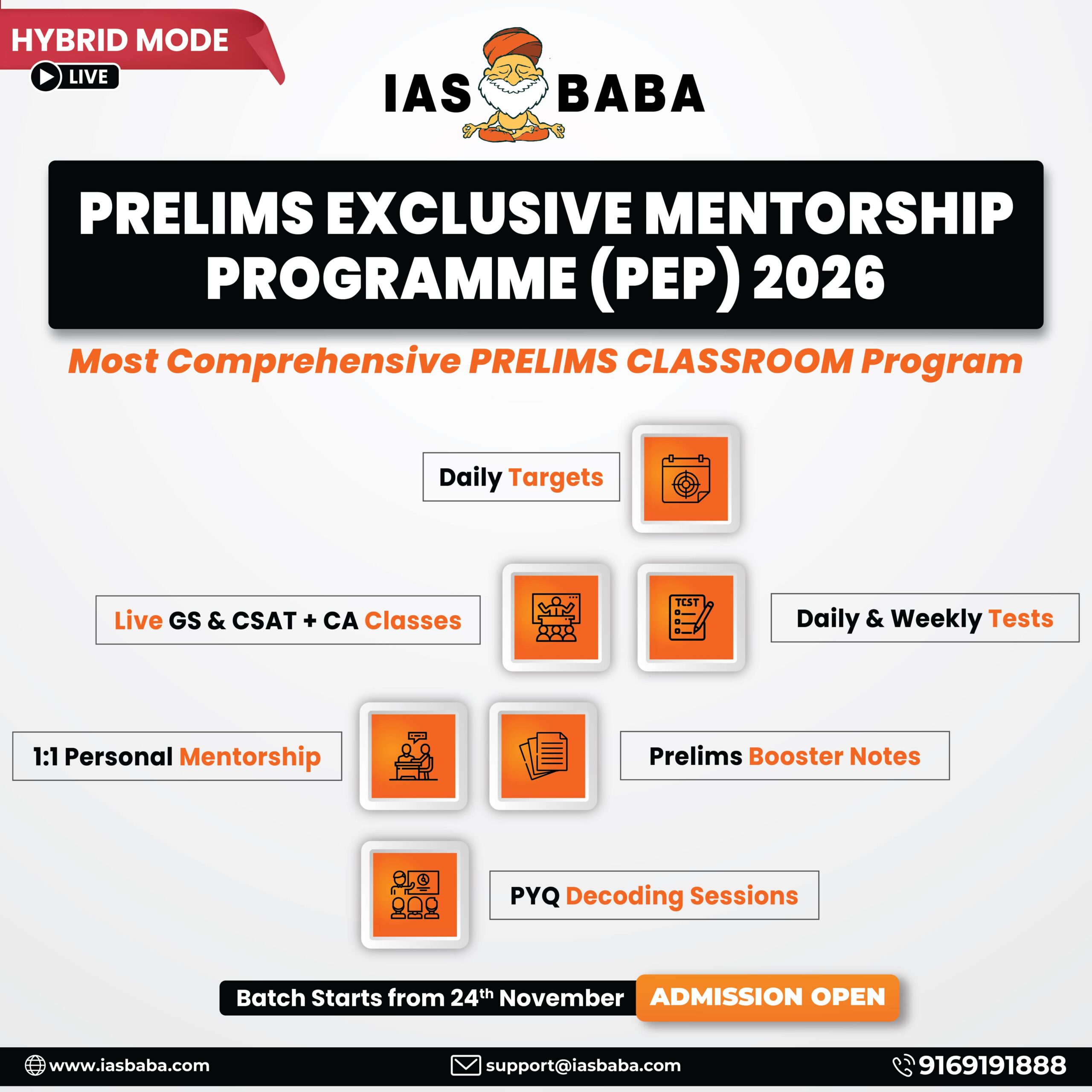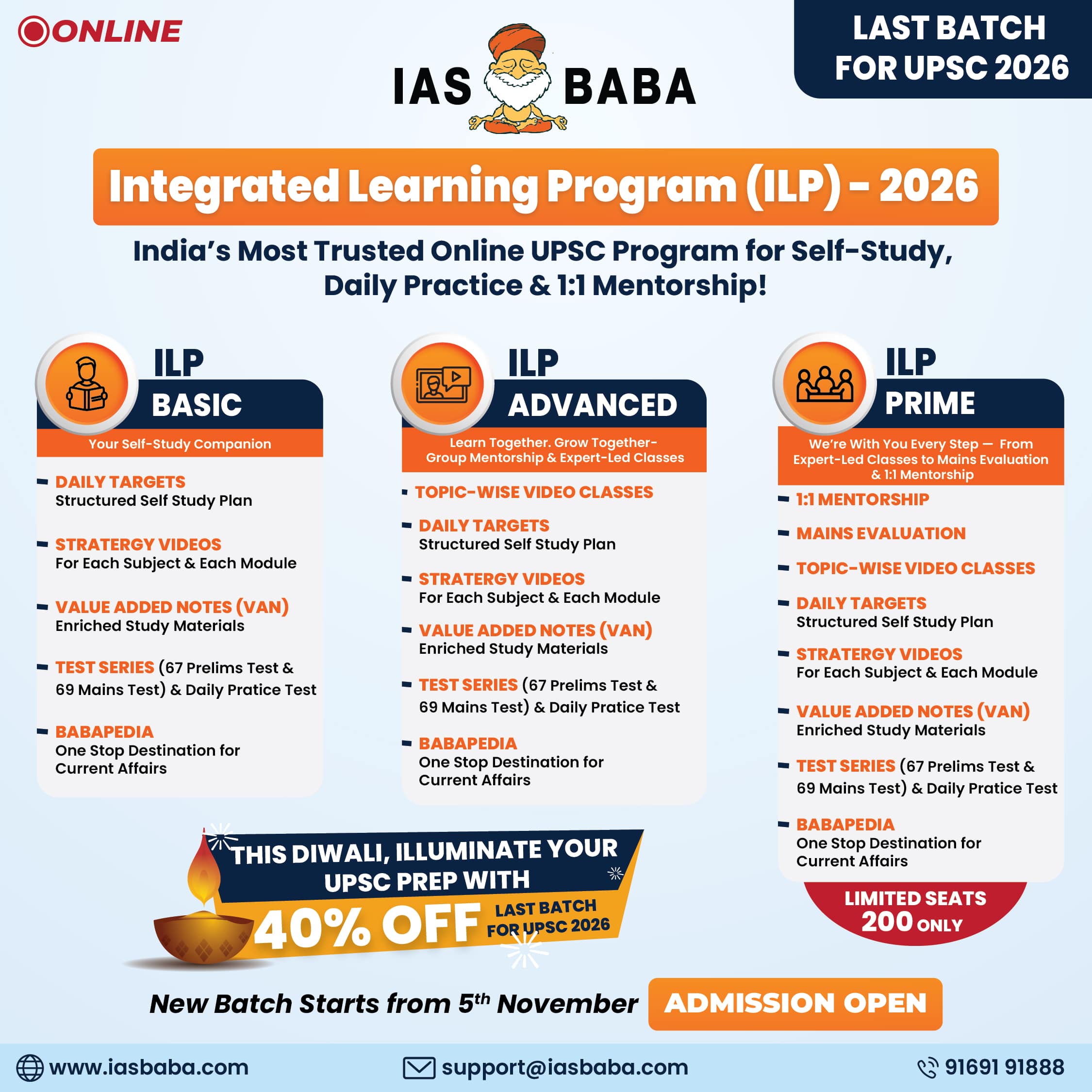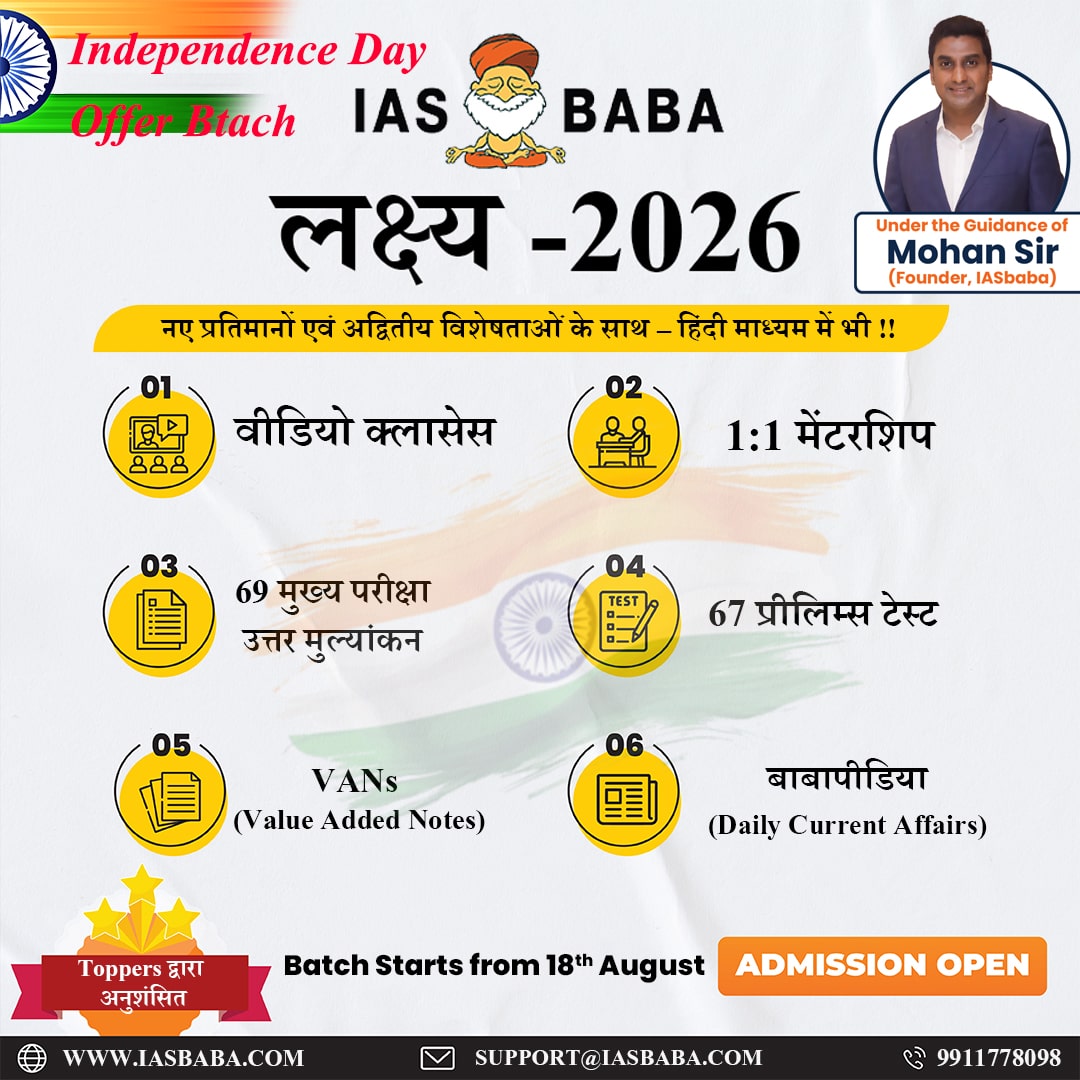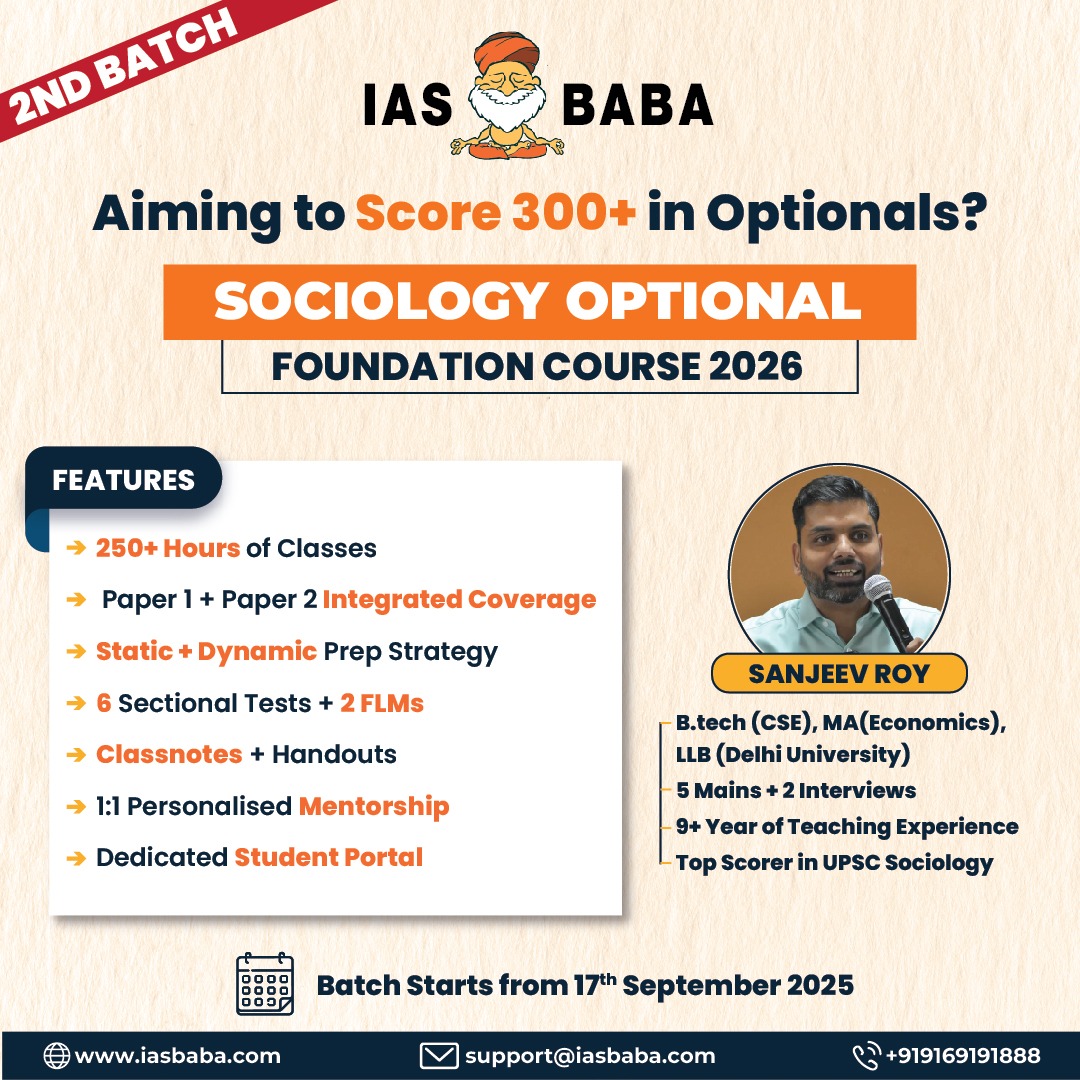IASbaba's Daily Current Affairs Analysis
Archives
(PRELIMS Focus)
Category: Government Schemes
Context:
- Bharatiya Janata Party (BJP) West Bengal president said that over ₹10,500 crore has been disbursed to the State’s farmers under the PM-KISAN scheme.
About PM-KISAN:
- Launch: Pradhan Mantri Kisan Samman Nidhi (PM-KISAN) is a Central-Sector scheme (100% funded by Government of India) and it was launched in December 2018.
- Objective: It aims to provide financial assistance to all land-holding farmer families across India. Under the scheme, eligible farmer families receive income support of Rs 6,000 annually, distributed in three equal installments of Rs 2,000 each.
- Nodal ministry: The Department of Agriculture and Farmers Welfare (DA&FW) of the Ministry of Agriculture and Farmers Welfare is the implementing agency. The DA&FW works with the Department of Agriculture of all the states and union territories to implement the scheme.
- Eligibility: All landholding farmers’ families, which have cultivable land holding in their names are eligible to get benefit under the scheme. For the purposes of this scheme, a farmer “family” consists of the husband, wife, and any minor children.
- Identification of beneficiaries: The responsibility to identify eligible farmer families rests with State Governments and Union Territory (UT) administrations, following the scheme’s guidelines.
- Use of DBT: The scheme ensures that funds are directly transferred to beneficiaries’ bank accounts to promote transparency and reduce delays. The government has also linked Kisan Credit Card with PM-KISAN to streamline farmers’ access to formal credit, reduce documentation, and make loan processing faster.
- Exclusion: The PM-KISAN scheme excludes beneficiaries with higher economic status, making them ineligible for benefits. These exclusions are as follows:
- All institutional landholders.
- Families where any member holds, or has held, constitutional posts.
- Former and present Ministers (Central or State), Members of Parliament (Lok Sabha/Rajya Sabha), State Legislative Assemblies/Councils, as well as former/present Mayors of Municipal Corporations and Chairpersons of District Panchayats.
- All serving or retired officers and employees of Central/State Government Ministries, Departments, and field units, including Public Sector Enterprises (PSEs) and autonomous institutions under government and regular employees of local bodies.
- Professionals such as Doctors, Engineers, Lawyers, Chartered Accountants, and Architects registered with professional bodies.
Source:
Category: Defence and Security
Context:
- Indonesian Defence Minister is scheduled to visit India in the last week of November for follow-up to the major defence agreement involving the BrahMos missile.
About BrahMos Missile:
- Nomenclature: It is named after the Brahmaputra River of India and the Moskva River of Russia.
- Development: BrahMos has been jointly developed by DRDO, India, and NPOM, Russia (with India owning 50.5% of the JV and Russia owning the remaining 49.5%).
- Range: An Indo-Russian joint venture, the BrahMos missile has a range of 290 km.
- Uniqueness: It is the world’s fastest cruise missile with a top speed of Mach 2.8 (about three times the speed of sound).
- Two-stage missile: It is a two-stage (solid propellant engine in the first stage and liquid ramjet in the second) missile.
- Multiplatform missile: It is a multiplatform missile which can be launched with great accuracy from land, air and sea having multi-capability capabilities and can operate during day and night despite bad weather.
- Based on fire and forget principle: It operates on the “fire and forget” principle i.e. it does not require guidance after launch.
- First launch: On June 12, 2001, the first successful launch of BrahMos occurred. The missile was launched from a land-based launcher at the Interim Test Range off the coast of Chandipur in Orissa.
- About BrahMos-NG (Next Generation):
- BrahMos-NG promises to become one of the most potent weapon systems in the future, carrying forward the excellent lineage of the existing world-class BrahMos.
- Its range is 290 km and it has a speed of 3.5 Mach.
- It has a smaller radar cross-section (RCS) than the previous missile, making it more difficult for air defence systems to detect and engage the target.
- Because of its small size, this missile can be launched from submarine torpedo rooms.
Source:
Category: History and Culture
Context:
- Assam Chief Minister left for London on Saturday to initiate the process of bringing back the revered Vrindavani Vastra from the British Museum.
About Vrindavani Vastra:
- Nature: It is a 400-year-old traditional textile from Assam, woven with the theme of Krishna’s various exploits.
- Prominent themes: The childhood stories of Lord Krishna in Vrindavan, his divine pastimes, and various events are woven with thread on this cloth.
- Building technique: It was made of woven silk using the complex ‘lampas’ technique. This technique requires two weavers working simultaneously. The designs were woven with a large variety of colored threads, like red, white, black, yellow, green, etc.
- History: It was created under the guidance of Srimanta Sankardeva, at the request of Koch king Nara Narayan, who ruled over parts of modern-day Assam and West Bengal. Notably, Nara Nararan had sheltered Sankardeva after the Vaishnav saint was targeted by the Ahom kingdom on the instigation of Brahmin priests in the state.
- Significance: The textile serves as a testament to Assamese weaving, incorporating elements from various artistic traditions, and travelled from Assam to Tibet before being acquired by the British Museum in 1904.
- Associated with Vaishnavism: A masterpiece of sacred art, the Vrindavani Vastra is a central part of Assamese Vaishnavism.
Source:
Category: Science and Technology
Context:
- Ethiopia has reported its first-ever outbreak of Marburg virus disease with laboratory tests confirming nine cases, the World Health Organization (WHO) said.
About Marburg Virus Disease (MVD):
- Nomenclature: It was first identified in 1967 in the German city of Marburg. And it was named after an outbreak linked to laboratory workers exposed to infected green monkeys imported from Uganda.
- Geographical spread: Most outbreaks have occurred in sub-Saharan Africa, including countries like Tanzania, Uganda, Angola, Ghana, Kenya, and Zimbabwe.
- Nature: MVD is a severe and often fatal hemorrhagic fever caused by the Marburg virus, with high case fatality rates and no approved treatments currently available.
- Symptoms: MVD starts with high fever, severe headache, and malaise. As it progresses, it can cause severe bleeding, shock, and multi-organ failure, with death occurring 8-9 days post-symptom onset.
- Transmission: It is transmitted from fruit bats (Rousettus aegyptiacus) to humans, and spreads through direct contact with bodily fluids of infected individuals.
- Diagnosis: Diagnosis is confirmed through tests like RT-PCR (Reverse Transcription Polymerase Chain Reaction), and virus isolation, which require maximum biohazard containment.
- Fatality rate: The average case fatality rate is approximately 50%, varying from 24% to 88% depending on the virus strain and case management.
- Treatment: Presently, no approved vaccine or antiviral treatments exist to treat it. Supportive care, such as rehydration and symptom management, improves survival.
- Control: Key control measures include community engagement, safe burials, contact tracing, and infection control in healthcare settings.
Source:
Category: Society
Context:
- Under the Prime Minister’s Jan Man Scheme, the Centre has sanctioned a Rs 9 crore development program for the Maram Naga tribe of Manipur.
About Maram Naga Tribe:
- Location: The Maram Naga tribe belongs to the Naga ethnic group, inhabiting the Northeastern part of India as well as the Western part of Myanmar. The Maram habitat falls under the Senapati district of Manipur.
- Race: They are considered to be a part of the Tibeto-Burman family of the Mongoloid race. The Marams are surrounded by other Naga tribes in all directions.
- Language: Linguistically, they belong to the sub-family of the Sino-Tibetan family. The people speak the Maram language. There are some variations in the way the dialect is spoken, corresponding with geographical location.
- Script: They use Roman script in writing their language.
- Occupation: Agriculture is the main occupation of the people. Shifting cultivation is the main cultivation practiced by them. They are also involved in wet cultivation. Hunting is the secondary occupation of Maram tribes.
- Religious beliefs: Maram tribes are the worshippers of supernatural benevolent and malevolent beings.
- Festivals: The two major festivals of the Marams are Punghi (celebrated in July) and Kanghi (in December). The tribe also celebrates a unique festival called Mangkang around April every year, dedicated to the women folks.
Source:
(MAINS Focus)
(GS Paper III – Agriculture, Food Security, MSP, PDS Reforms)
Context (Introduction)
India faces a paradox: record paddy procurement and overflowing rice stocks far above buffer norms, even as the country spends heavily on importing pulses and edible oils. The Tamil Nadu procurement controversy reflects deeper structural flaws in India’s cereal-centric policy regime.
Main Arguments
- Excess procurement and rising stocks: Rice stocks in the central pool on Oct 1, 2025 stood at 356.1 lakh tonnes, over 3.5 times the required norm (102.5 lakh tonnes). Annual rice procurement remains high at 525–547 lakh tonnes, while PDS offtake remains lower (392–427 lakh tonnes).
- MSP-driven skew towards paddy: Farmers increasingly shift to paddy due to minimum assured returns, as seen in Tamil Nadu’s kuruvai season expansion by 2 lakh acres. This creates procurement pressure and disincentivises diversification.
- Import dependence despite domestic capacity: India imports ₹1.2 lakh crore of edible oils and ₹30,000 crore of pulses, even though it is the world’s largest pulses producer (252.4 lakh tonnes, 2024–25). Oilseed production has stagnated around 400 lakh tonnes only once since 2014.
- Mismatch between procurement and consumption: While rice is over-procured, wheat shows the opposite trend: PDS utilisation exceeded procurement in two of the last three years. This highlights lack of dynamic, crop-wise planning.
- High fiscal cost with systemic leakages: The food subsidy bill remains around ₹2 lakh crore annually, yet leakage continues. An ICRIER study reported ~28% loss of rice and wheat during distribution — highlighting inefficiencies in PDS and procurement.
Criticisms / Drawbacks
- Unsustainable cereal-heavy procurement: Over-dependence on rice procurement crowds out essential nutritional crops, contradicting the broader goals of food security and nutrition security.
- Disincentivisation of crop rotation and diversification: Paddy dominance erodes soil health, depletes groundwater, and discourages pulses/oilseeds that are crucial for dietary diversity.
- Ineffective MSP operations for pulses and oilseeds: Despite high production, procurement of notified pulses has fallen substantially over the last two years, signalling weak support systems unlike for paddy/wheat.
- Structural inefficiencies in FCI and State corporations: Time overruns, potential corruption, and poor coordination—as seen in TNCSC—reflect broader weaknesses in centralised procurement, storage, and transport systems.
- Weak institutional mechanisms for market integration: FPOs remain nascent, and farmers lack secure linkages with processors (e.g., blackgram growers and papad makers). Fragmented value chains worsen farmer uncertainty.
Suggested Reforms
- Incentivise Crop Diversification
- Conduct area-specific demand–supply market studies to guide farmers.
- Provide financial support, crop-specific advisories, and risk mitigation tools.
- Replicate models from Punjab-Haryana diversification pilots and Telangana’s oilseed push.
- Rationalise Procurement Policies
- Introduce flexible procurement ceilings based on nutritional needs and buffer norms.
- Revisit MSP coverage to include more pulses and oilseeds under assured procurement.
- Permit unrestricted rice exports, avoiding ad hoc bans that depress farmer incomes.
- Strengthen Farmer–Market Linkages
- Encourage FPO–processor partnerships; e.g., blackgram growers–papad units.
- Promote contract farming frameworks with safeguards to reduce intermediaries.
- Expand FPO capacity in procurement (e.g., West Bengal’s successful use of FPOs in paddy procurement).
- Reform PDS and Reduce Leakages
- Digitise end-to-end supply chains (e-NAM–PDS linkage, GPS tracking).
- Expand portability under One Nation One Ration Card (ONORC).
- Adopt community monitoring and SHG-led distribution in vulnerable districts.
- Boost Oilseed and Pulse Productivity
- Expand area under NFSM-Oilseeds & Pulses, promote HYVs and water-saving technologies.
- Invest in R&D: India has stagnant yields (around 1 tonne/ha for oilseeds).
- Incentivise private sector in processing and storage for value addition.
Conclusion
India’s cereal policy, designed six decades ago to address scarcity, is misaligned with today’s nutritional, environmental, and fiscal realities. Rebalancing procurement towards pulses and oilseeds, empowering FPOs, enabling freer markets, and modernising PDS can transform this paradox into an opportunity—ensuring both food security and farmer security in a sustainable manner.
Mains Question
- India’s foodgrain procurement system has created a cereal-heavy imbalance. Analyse the structural reasons for this paradox and suggest necessary reforms.(250 words, 15 marks)
Source: The Hindu
(GS Paper III – Agriculture: IPR, Seeds, Farmer Rights, Biotechnology)
Context (Introduction)
The Centre plans to amend the Protection of Plant Varieties and Farmers’ Rights Act (2001) after two decades. A committee led by R.S. Paroda has begun consultations to align the law with new technologies, seed-sector changes, and farmers’ rights concerns.
Main Arguments
- Updating definitions in line with new technologies: Stakeholders are discussing expanding the definition of ‘variety’ to include “combination of genotypes”—bringing it closer to the draft Seeds Bill, 2019. This recognises modern breeding techniques and evolving seed types.
- Wider inclusion of planting materials: Proposed expansion of the definition of “seed” to include seedlings, tubers, bulbs, rhizomes, roots, tissue culture plantlets, synthetic seeds and all vegetatively propagated materials—ensuring comprehensive legal coverage.
- Clarifying status of breeders and institutions: The law may define “institution” more explicitly to include both public and private entities, bringing clarity for registration, rights, and liability within the seed sector.
- Strengthening DUS (Distinctness, Uniformity, Stability) testing norms: Discussions focus on adding trait-based parameters into DUS guidelines and questioning current testing processes to ensure rigorous and transparent evaluation of new varieties.
- Defining “abusive acts”: Proposed amendments seek to criminalise actions such as producing, selling, or exporting a variety with the same or identical denomination as an already registered variety—preventing market confusion and bio-piracy.
Key Concerns of Farmers’ Groups
- Protection of community-developed seeds: Farmer unions like Samyukt Kisan Morcha argue that all community-developed and traditional varieties should be mandatorily registered as community property to prevent future private monopolisation.
- Misuse of DUS tests for private benefit: Farmers fear that flawed or manipulated testing could allow private firms to register community varieties. The alleged improper DUS testing of njavara (a traditional South Indian paddy) has heightened distrust.
- IPR model incompatible with traditional seed practices: Analysts argue that small farmers treat seeds as shared, biocultural material, not as products of exclusive ownership. Expanding IPR without safeguards risks undermining age-old seed exchange systems.
- Pressure to align domestic law with UPOV standards: Activists note international pressure to harmonise Indian law with UPOV (International Union for the Protection of New Varieties of Plants)—which grants stronger breeders’ rights and weaker farmers’ privileges compared to India’s current Act.
- Lack of clear compensation rules: Although the original Act mandated compensation for failure of IP-protected seeds, Rules do not detail compensation criteria, leaving farmers unprotected when seeds fail to perform.
Reforms and Way Forward
- Strengthen registration of traditional varieties
- Create a mandatory community registry for all local and traditional seeds.
- Ensure DUS exemptions or simplified protocols for farmers’ varieties, similar to global “farmer-led seed systems.”
- Transparent and independent DUS testing
- Publish full DUS protocols, results, and test locations.
- Establish third-party oversight to prevent manipulation.
- Adopt trait-based DUS parameters to reflect modern breeding.
- Farmer-friendly IPR safeguards
- Maintain India’s strong farmers’ rights to save, reuse, share, exchange seed—a global model distinct from UPOV.
- Implement open-source seed licences for publicly funded varieties.
- Ensure accountability of breeders
- Frame Rules for compensation, covering crop loss, non-performance, and defective planting material.
- Introduce time-bound redressal mechanisms through Seed Consumers’ Courts or district-level authorities.
- Capacity building and awareness
- Provide farmer organisations with legal and technical training on IPR and seed rights.
- Bring small farmers into the system through local-language advisories and local seed committees.
Conclusion
Two decades after its enactment, India’s plant variety law faces the dual challenge of recognising scientific advances while safeguarding the seed sovereignty of millions of small farmers. Balanced reforms—strengthening community rights, improving testing integrity, and ensuring accountability—can modernise the Act without compromising India’s unique pro-farmer framework.
Mains Question
- Why is the Protection of Plant Varieties and Farmers’ Rights Act being amended? Discuss the major proposed changes and examine the concerns raised by farmers’ groups (250 words, 15 marks)
Source: The Hindu













